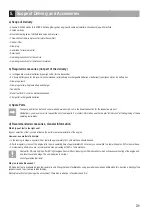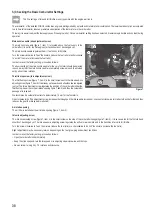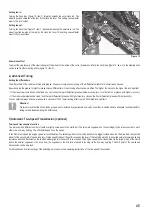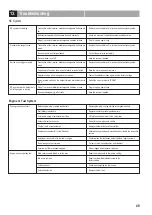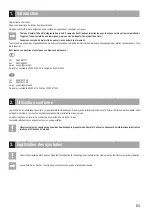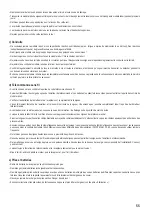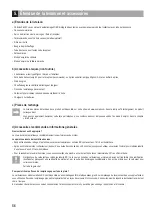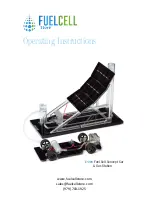
43
b) Setting the Shock Absorbers
The shock absorbers are equipped with threaded spring pre-tensioners.
Twisting the knurled nut (figure 8, item 3) upwards relieves the spring tension. Twisting
down will increase the spring pre-tension.
The spring preload can thus be finely adjusted according to surface and manner of
driving.
• A low spring pre-tension lets the chassis sink lower due to its inherent weight.
• A harder setting lifts the chassis.
The shock absorbers are attached at the top end of the dampener bridge (1) and at
the bottom at the lowest axle stub (2).
Hence, adjusting the damping not only affects the ability of the model to ”even out”
road unevenness but also its behaviour in bends.
This is called ”oversteering” or ”understeering” driving behaviour.
Oversteering driving behaviour
The model “pulls” into the curve, the rear tends to swerve (too little traction on the rear axle or too much traction on the steered front axle). As a counter measure
the suspension should be set softer at the rear (or harder at the front).
Understeering driving behaviour
The model is difficult to steer around the bend, “pushes” the front wheels outwards (too much traction of the rear axle or too little traction of the steered front axle).
As a counter measure the suspension should be set harder at the rear (or softer at the front).
Over- or understeering driving behaviour may also be caused by uneven side guide forces of front and rear axle due to incorrect setting of the wheel camber.
As a basic setting the front axle should be approx.. 5 mm lower than the rear axle!
Check the impact of the shock absorbers:
• Lift the model at the rear axle and drop it.
• The model should not deflect until lock and only top out once (without any reverberation!)
• Test the shock absorbers of the front axle in the same way.
Setting the spring pre-tension
• Increasing spring preload: Turn knurled nut on the outer tube of the shock absorber clockwise.
• Decreasing spring pre-tension: Turn knurled nut on the outer tube of the shock absorber counter-clockwise.
Shock absorber tuning
By selecting the right shock absorber oil, you can influence the shock absorbing characteristics. The oil serially used in the shock absorbers is very well suitable
for most applications. The shock absorbers can be unscrewed for “oil change”. We recommend that the shock absorbers be removed from the model for this first.
• On mainly smooth ground, we recommend more viscous oil (high viscosity).
• On open terrain, however, you should use less viscous oil (low viscosity).
Do not use any conventional engine oil. We recommend only using pure silicone dampener oil. To further optimize the damper characteristics, we
offer silicon oil in different viscosities for the shock absorbers in our accessories.
In addition to viscosity variations, different tuning shock absorber spring scan also be used.
Figure 8
Summary of Contents for 27 51 16
Page 102: ...102 ...
Page 103: ...103 ...



